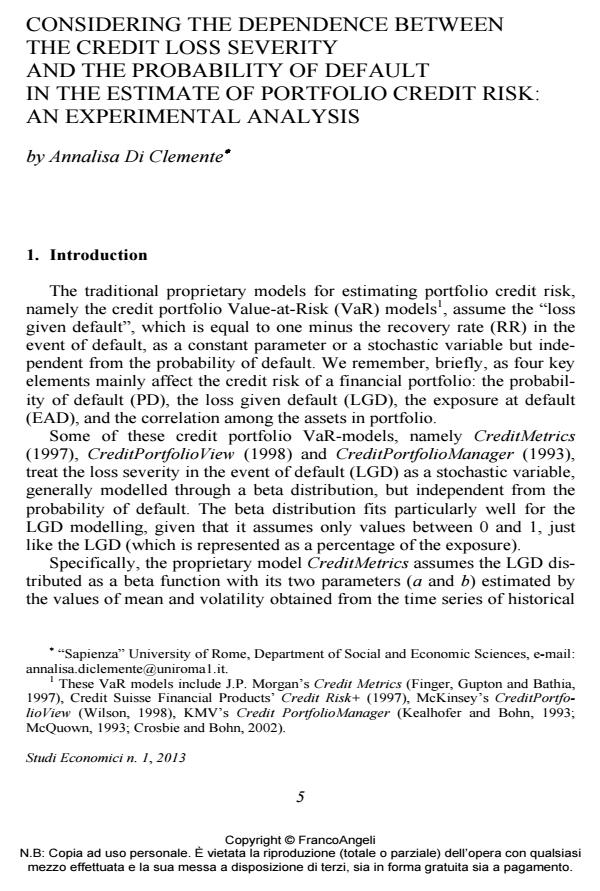Considering the dependence between the credit loss severity and the probability of default in the estimate of portfolio credit risk: an experimental analysis
Titolo Rivista STUDI ECONOMICI
Autori/Curatori Annalisa Di Clemente
Anno di pubblicazione 2014 Fascicolo 2013/109
Lingua Inglese Numero pagine 20 P. 5-24 Dimensione file 103 KB
DOI 10.3280/STE2013-109001
Il DOI è il codice a barre della proprietà intellettuale: per saperne di più
clicca qui
Qui sotto puoi vedere in anteprima la prima pagina di questo articolo.
Se questo articolo ti interessa, lo puoi acquistare (e scaricare in formato pdf) seguendo le facili indicazioni per acquistare il download credit. Acquista Download Credits per scaricare questo Articolo in formato PDF

FrancoAngeli è membro della Publishers International Linking Association, Inc (PILA)associazione indipendente e non profit per facilitare (attraverso i servizi tecnologici implementati da CrossRef.org) l’accesso degli studiosi ai contenuti digitali nelle pubblicazioni professionali e scientifiche
In this paper a simple and innovative model for measuring more accurately the credit tail risk of a banking book is presented. This is a Monte Carlo simulation model in which the credit loss severity (LGD) is a stochastic variable and it is correlated to the default event. Specifically, LGD is assumed to be distributed as a conditional beta function and its two parameters a and b are estimated assuming a mean value of LGD linked to the value of the PD conditional to the value of the macro-economic risk factor generated in every Monte Carlo simulative scenario. The linkage between the average LGD and the conditional PD is obtained by a simple linear regression analysis calibrated by using the time series of easily available financial historical data (Moody’s, 2011; Standard & Poor’s, 2012).
Parole chiave:Loss Given Default, Probability of Default, Expected Shortfall, Value-at-Risk, Monte Carlo Simulation, Conditional Beta Function.
Jel codes:G15, G21, G28
Annalisa Di Clemente, Considering the dependence between the credit loss severity and the probability of default in the estimate of portfolio credit risk: an experimental analysis in "STUDI ECONOMICI " 109/2013, pp 5-24, DOI: 10.3280/STE2013-109001